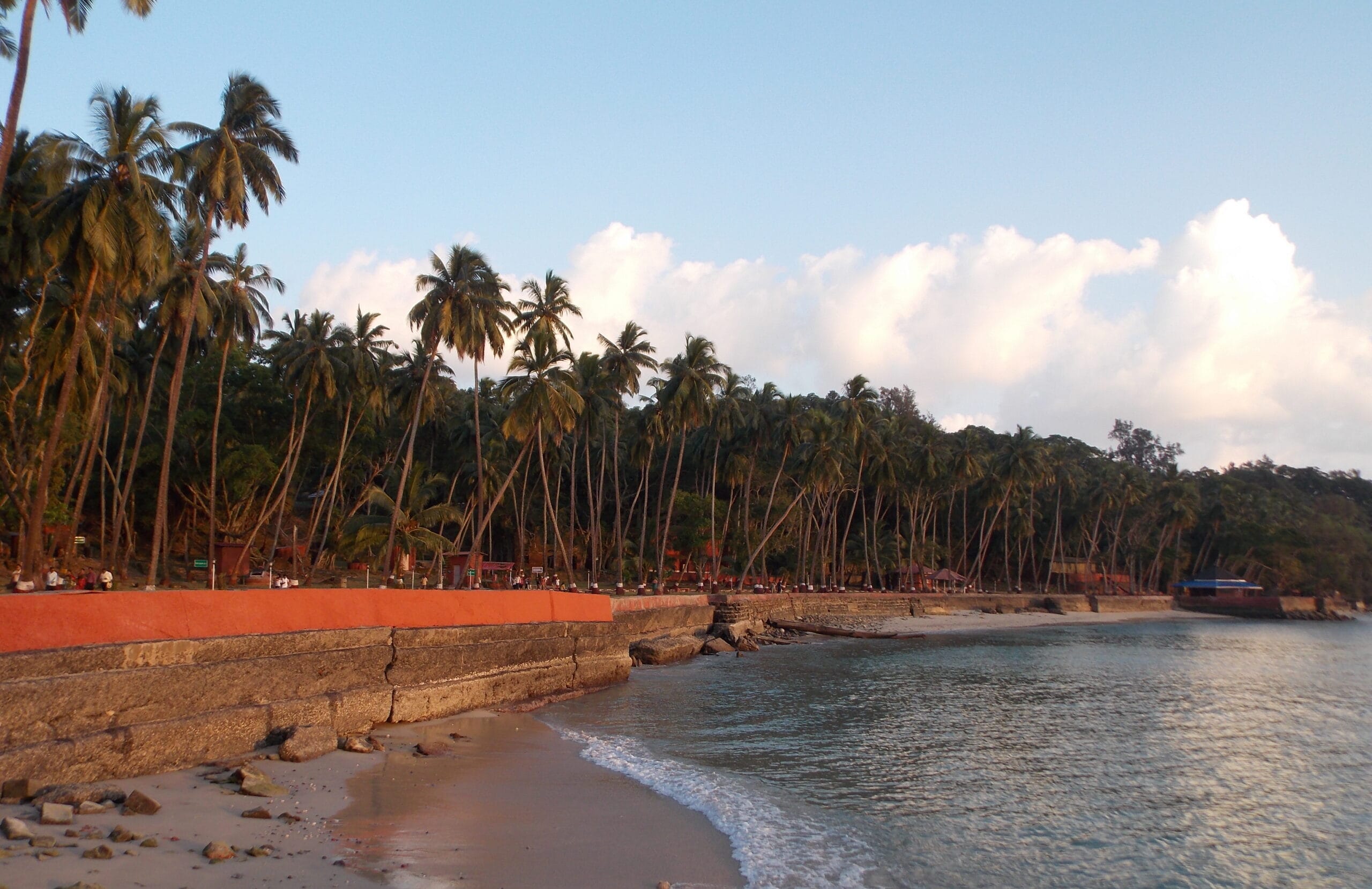Ross Island Andaman, a jewel nestled in the azure waters of the Andaman Sea, holds the whispers of a bygone era and the untouched beauty of nature. It is a quaint island in Southern Andaman, situated about 3 km from Port Blair, which has recently been renamed Netaji Subhash Chandra Bose Island.
I have visited Ross twice, once in 2013 and the second time last year in 2023. The decade has changed a lot on this abandoned island.
How to Reach Ross Island
You can reach Ross Island from Aberdeen Jetty, Rajiv Gandhi Sports Complex in Port Blair. It takes about 10-15 mins, but the ride is choppy. The waves are quite huge and the water is rough. On the jetty, you may also get to spot Dolphins up close.
The Ferry timings vary with season, but broadly they start at 8.30 am and the last ferry leaves at about 2.30 pm. Since night stay is prohibited on Ross Island, you do not have any ferries in the evening.

The History of Ross Island
This island got its name from a marine surveyor Daniel Ross who had opened the gates of the Andaman Islands to the British. Ross Island was established as a Penal Colony in 1958 to punish the rebels of the Indian Sepoy Mutiny in 1857. After building a jail and infirmary and using the prisoners to clear the deep forestation, the Britishers decided to settle here. This was originally faced with a lot of hostility from the aboriginal tribes, leading to frequent clashes, and ultimately in the “Battle of Aberdeen”, the natives finally abandoned the islands.

The island was now under full control of the British who made it the Headquarters of the entire Andaman & Nicobar Islands and it remained so until 1941 when an earthquake submerged a part of the island and forced the British to shift to Port Blair. And they developed the island so much that it came to be called “Spain of the East”. In 1942 the Japanese came and established war bunkers here and stayed there till WWII when the island went back to the British.
When the Japanese occupied this island, Netaji Subhash Chandra Bose stayed on this island and hoisted the Indian flag, and hence in 2018 the island was renamed after him, in his honor.
Even today, Ross Island bears the signs of the colonial legacy it once witnessed. But the natural flora, the banyan trees have outgrown and covered all the beautiful structures – a mere remnant of the glory.
What to Expect at Ross Island
Ross Island today is an abandoned island, with all its glory lost in the pages of history. There is a Presbyterian Church carved of stone with stained glass and wooden frames. There are cobbled streets, remnants of street lamps, a printing press, and a water distillation plant. You will also find a hospital, cemetery, secretariat, shops (which includes a famous bakery), workshops, gardens, and every aspect of not only a civilized but also a flourishing British society.

However, all of these, barring the water distillation plant and the bakery today are entwined in banyan tree roots and dense foliage, a sad picture of the ruin and abandonment. The Bakery – Farzand Ali Store was operational when I visited it way back in 2013. They provided bread to the animals that were being fed by the lady of Ross Island, Anuradha Rao. She is India’s answer to Dr Doolittle and can call birds, deer, and rabbits by simply calling them. Single-handedly she ensured the welfare of over 500 deer, countless peacocks, birds, and rabbits on this small island.
Today the Farzand Ali Bakery has been converted into a museum and they run a light and sound show on the history of the Andaman Islands. On the outskirts of the island, near the jetty.

Ross Island’s Tryst With Natural Calamities
The small island has had its fair share of natural calamities. The first is the deforestation that caused the change in nature’s relationship with the island. Then came the earthquake in 1941 that caused the British to abandon the island and that destroyed a part of the island.
However, the greatest destruction happened in the tsunami of 2004, which washed away almost two-thirds of the island. What you see today is both literally and figuratively a fragment of its former size and glory.
Getting Around on Ross Island in Andaman
Netaji Subhash Chandra Island is a small one, less than 2 km in width, and hence the only way to look around is to walk. For elder citizens, you will find battery-operated cars as well.
This island is a beautiful yet sad reminder of the rise and fall of the glory of British settlement and the supreme sacrifice of the freedom fighters of India. If you are planning a visit to Andaman & Nicobar Islands, then you must find time to visit this island. It will change your entire perspective of life. The grandeur and aura still clearly visible in the veil of overgrown trees and roots is a stark reminder of the impermanence of life and its struggles.
However, unfortunately, if you visit now, you will not get to meet the great lady, Anuradha Rao, who protected this island with a fortitude and dedication that stems from her freedom fighter ancestors. She survived the aftermath of the tsunami in 2004 and turned this small island into a nature’s haven.
If you are looking for other places to visit in the Andaman Islands, please check my post on Radhanagar Beach.
If you are looking for other seaside options, check my posts on Murud Janjira, Kashid, Malshej Ghat and Kihim Beach in Maharashtra. Alternatively, if you are interested in some Religious tourism, please check my posts on Golden Temple, Kamakhya, Trimbakeshwar, and Kashi Vishwanath. If you are looking for Adventure tours, check my posts on Pahalgam, Sonmarg, Shillong, Meghalaya, Dawki, Double Decker Living Root Trek , Tsomgo Lake and Kashmir.
If you are looking for some spirituality, you can check out Ganga Aarti in Dashashwamedh Ghat or Ghats in Varanasi. Check out my posts from South India Sri Venugopala Swamy Temple, Bandipur Safari, and Mandalpatti Peak.


15 thoughts on “Ross Island Andaman – 5 Important Things to Know Before Visit”